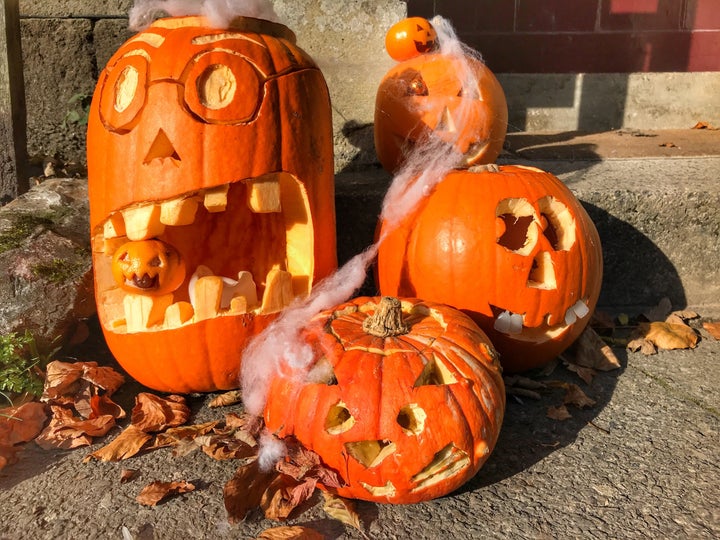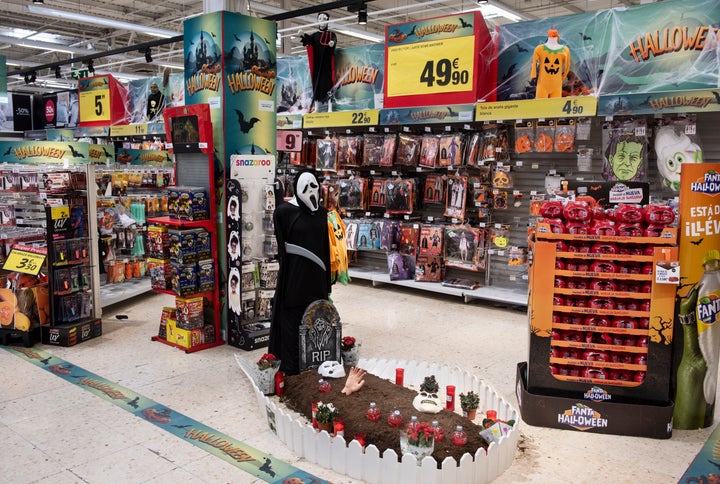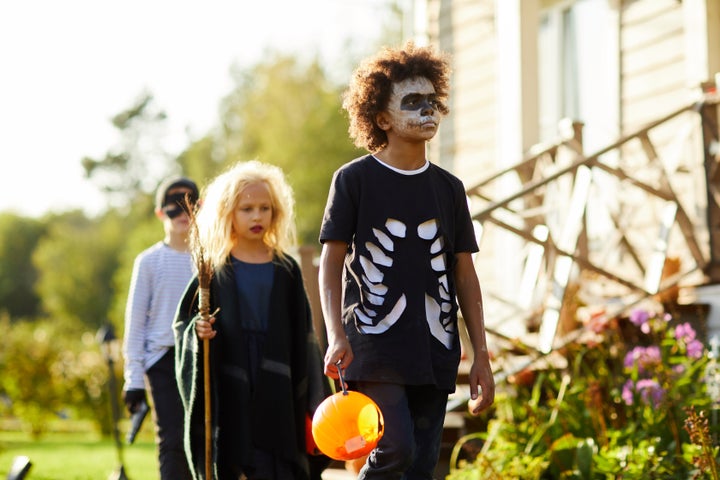
Online, “viral” things can often be mistaken for “popular” things. Take, for example, a Facebook post from 2011, in which an owl can be seen tangled up in artificial spider web decor. The impassioned response gives the impression that the incident doubles as an epidemic: that we should be concerned with the dangers these decorations pose to unsuspecting animals.
But it’s also possible, wildlife officials seem to suggest, that we’re making a mountain out of a molehill.
“We haven’t had any reports or cases here where animals have gotten caught in those webs,” Cathy Stockman, the director of operations at Shades of Hope Wildlife Refuge, told HuffPost Canada over the phone.

Though the rehabilitation centre, which is located in Georgina, Ont., has cared for thousands of wild birds, mammals, and reptiles — 3,600 in 2018 alone — those intakes are more often a result of road accidents, human cruelty, and a lack of suitable habitat than from catastrophic encounters with holiday decorations.
Nathalie Karvonen, executive director of the Toronto Wildlife Centre, reported similar circumstances. “Halloween decorations aren’t really an issue for the wild animals we see coming into our hospital,” she said in an email to HuffPost Canada.
“Some tiny birds (e.g. hummingbirds) can get caught in real spider webs, but I’ve not known of examples where they get caught in the fake webs — understandable, as the fake ones aren’t sticky and [aren’t] designed to capture animals like the real ones,” she says.
Watch: Get your Halloween inspiration from these five famous Canadians. Story continues below.
Even though neither wildlife centre’s staff have had to untangle a bird from a fake web, that doesn’t mean Halloween decorations pose no danger to the environment at all.
Stockman notes it’s important that we remain conscious of what sorts of things we’re adorning our homes with — holiday lights, other unsecured items that hang loosely across trees — because there’s always a chance those items might disrupt the habitats of animals that live in the area.
“Anything in the decoration department is something we should be careful about,” she says. Netting, for example, can be a potential concern, as can “anything else that an animal could get a head or a leg stuck in, or that it might get tangled up with.”

The real culprit is plastic (and toxic chemicals)
It seem the true horror here comes down to the fact that Halloween decor is often cheap and non-recyclable, meaning it will inevitably, as all single-use items do, end up clogging a landfill somewhere, or be discarded in places animals use as habitats.
A new survey has even suggested that, at least in the U.K., an estimated 2,000 tonnes of plastic waste — which is equivalent to 83 million plastic bottles — will be generated from throwaway Halloween costumes this year alone.
In October, two British charities polled 19 leading supermarkets and retailers. They found that 83 per cent of the materials used in the 324 costume samples used non-biodegradable, oil-based plastics that would likely turn up in oceans and landfills.

There’s no shortage of images and studies showing the dangers plastic waste poses to animals — particularly marine animals, who can accidentally eat or become entangled in the debris, which never fully breaks down.
More than 175 million Americans celebrated Halloween last year — comparably specific statistics don’t seem to exist in Canada — which means 175 million people shared in on a tradition known globally for its waste (think about all those single-wrapped candies, littering the sidewalks).
Thanks to Canada’s textile flammability regulations, for example, many packaged Halloween costumes are made with cheap, mass-produced, flame-resistant fabrics. That’s great for kids whose holiday antics might result in a desperate need for a fire extinguisher, but is otherwise bad from an environmental standpoint, since studies have found that the chemicals needed to make flame retardants are toxic and can leach into the environment after being discarded.
“We’ve seen a lot of skunks and other animals get their heads stuck through those plastic [six pack] rings,” Stockton says. And while plastic six pack rings aren’t necessarily the same thing as Halloween packaging and decor, the end result has the potential to be.

Going greener
With all of that being said, it isn’t impossible to do better on Halloween.
When it comes to picking out the perfect costume each year, it’s good practice to try searching specifically for “PVC-free” or “phthalate free” costumes. (Phthalates are toxic chemicals used to soften PVC plastic, which is one of the most environmentally damaging plastics, according to Greenpeace.)
And while it may not be as glamorous as you’d hoped, it’s also worth considering going completely zero waste on those costumes.

Many services exist out there that will allow you to rent out your costume — which is fine, since you likely won’t be needing it for a job interview or anything else in the near future — and there’s always the possibility of swapping old costumes with friends and family.
You can also try shopping your own closet for things you already have, and take a DIY approach to your Halloween festivities. (Thrift stores are a thing, too.)
As for those decorations, you can still go green without sacrificing too much. There are lots of inspiration boards out there that offer examples of how to keep your decor waste-free. You can reuse items from prior years, and try avoiding things like crepe paper, or energy-eating inflatables, or — if you’re being extra careful — those famous spider webs that won’t stick around for that long after, anyway.
Also on HuffPost: